Marketers have a wide range of tools for finding new customers.
Some common acquisition channels include paid search ads, telemarketing, bulk emailing, or affiliate word-of-mouth recommendations.
A more recent trend is for businesses to find new customers directly on social media. This type of marketing is known as ‘social prospecting’ and its popularity has risen in recent years. That’s partly due to the widespread adoption of social media; in 2022, there are 4.7 billion social media users worldwide.
But how do you go about prospecting customers in social media?
As such, the majority of your customers likely have a social media account, making it a great avenue for finding and striking new connections. Effective strategies for converting visitors into customers include offering personalized experiences and clear calls-to-action. This can be especially valuable in niches where you want to build a trusting relationship with a few select clients. For example, the accounting or financing industries, which take more time to convert leads into paying customers.
Do you see the value in social prospecting? Whether you’re a beginner, or an expert looking to refresh your knowledge, this article will cover everything that you need to know. We’ll consider why and how companies run successful campaigns, and outline a 5-step plan for getting started.

Image sourced from Hootsuite
What social media prospecting is, explained
To understand what social media prospecting is, we must think of it in the context of the broader customer lifecycle journey. That is, the chronological stages of a customer’s relationship with your company.
Most marketing experts split this journey into 5 stages:
- Reach: Your reach is to do with spreading the word of your company’s products and services, be it through inbound or outbound marketing channels. Your reach on social media may be measured by the total number of impressions your content has.
- Acquisition: This part of the process is for your marketers to grapple with. Essentially, it is about achieving a high engagement on your social media posts. e.g. the number of people that visit your company’s website – measured by click through rate (CTR).
- Conversion: This part of the process is for your sales team. Of the people that have engaged with your social media content, how many of them are converted into paying customers?
- Retention: Paying customers are incentivized to return and spend money again.
- Loyalty: The sense of loyalty to a brand is fostered and built open, thus creating dedicated customers who will vouch for your products i.e. marketing by word-of-mouth.
Customer prospecting is mostly concerned with the ‘acquisition’ phase of the customer lifecycle journey. The goal is to generate as many qualified leads as possible by pulling promising targets into your company’s sales funnel.
To accomplish this, social prospectors will attempt to identify clients on social media sites, and then personally reach out to them. If successful, a friendly relationship can be built with the individual before they are ‘converted’ into a paying customer later down the line.
Why do companies use it?
Social media prospecting is a powerful tool for 2 main reasons:
- It delivers a valuable return on investment. In fact, social prospecting leads have a ~15% conversion rate, ~5x higher than the rate of other acquisition channels. See: Sales Benchmark Index.
- It is advantageous for market visibility. By reaching out to customers directly, businesses can gain a better understanding of who their customer base is (and what they want).
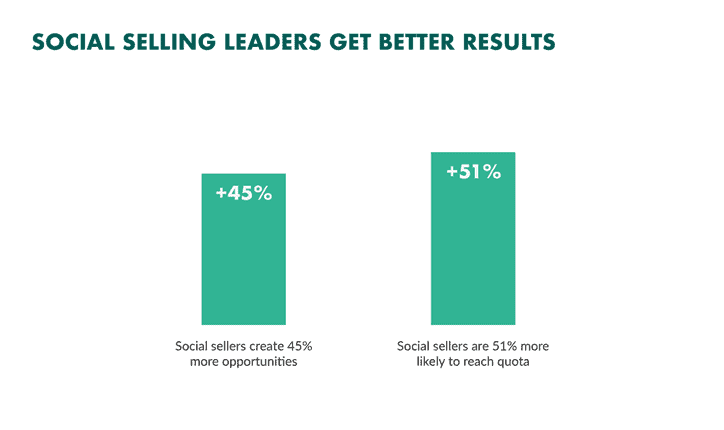
Image sourced from Super Office
Common tools used by prospectors
Before we outline the general process for social prospecting, it will be useful to understand some of the technology + terms you might encounter.
Algorithmic segmentation
As we previously stated, there are billions of social media users.
Selecting those people at random in the search for a potential customer is like hoping to find a needle in a haystack. To expedite the process, there are mathematical tools at our disposal – namely, algorithmic segmentation. An addition to that you can use tool like People Search API this tool help you gather accurate information and data about certain individual customer.
This technology works by telling the machine what your ‘ideal customer’ looks like. To achieve this, we need to input what sorts of criteria should be sought after. For example:
- Location: Are you looking for customers in a select country, state, or city? Simple – most social media users share their hometown and current location. You can use this data to ‘geotarget’ select individuals in your chosen area. To go a step further, you may want to prioritize people who have checked in at, or visited, relevant locations.
Example: travel agents may want to prospect for people who live in their state, and who have been on vacation in the last year.
- Interests: What sort of person is your average customer? How old are they, what is their marital status, and do they have children or pets? The good news for you is that social media users love to share their interests. As well as sorting by ‘Likes’, you can also narrow down the search to members of particular relevant ‘Groups’. For example, a fan page or community.
Example: pet groomers may want to prospect for owners of that particular animal.
- Shopping habits & behavior: How receptive will this person be to your prospecting? Predicting this might seem like an impossible task, but some criteria can help. For instance, has this person left any customer service review examples? That may signal they are more inclined to business-to-customer engagement.
Example: all the Best Social Media prospectors will find this useful since it raises the possibility of engagement and customer conversion.
Data scraping tools
By now, you understand the process by which algorithmic segmentation happens or utilizes Advanced Person Search. However, a problem remains: how do prospectors collect that data in the first place? The answer lies in data scraping tools, or ‘web scrapers’.
Web scraping is a technique for collecting online data. The process uses scripts, or ‘bots’, to extract HTML data and replicate it on a database. From here, the data may be ranked accordingly to the set criteria.
Some readers may be wondering, is web scraping legal? Luckily for social prospectors, it is – as long as the data you are scraping is publicly available on the Internet. However, you obviously cannot collect prohibited or confidential data, though that should be hidden in the first place.
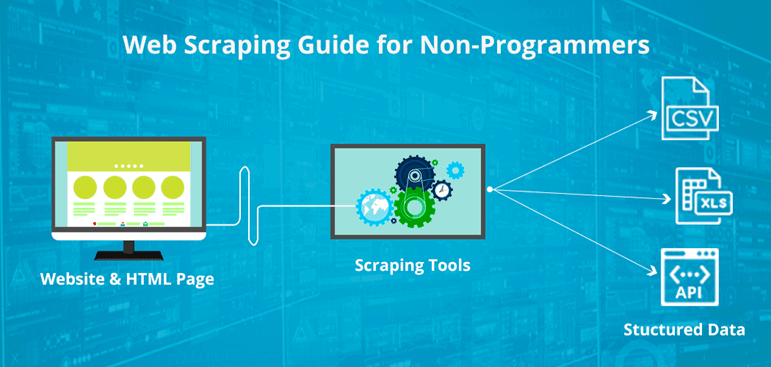
Image sourced from Pro Webscraper
Community engagement
Among the more manual processes of identifying potential clients, community engagement is a favored choice. This method includes joining relevant community groups and networking with their members.
For instance, an accounting agency may prospect new customers by searching for small business owners’ groups in their local city or area.
To find the most relevant groups, prospectors will search for groups by keywords. This is largely the same process as for SEO – that is, finding words that best describe the topic area. So, the aforementioned accounting agency may look for groups with ‘business owner’, ‘ask an accountant’, and ‘tax advice’, among others.
Other criteria include location of the group, its activity levels, and how many people are members. You might even want to look at groups for local educational institutions, such as graduate and course pages.
To streamline the process, be sure to use a social media management platform. Their handy mobile apps mean that you can control your social media strategy from your own pocket. What’s more, they employ automating mobile app testing to ensure the latest compatibilities. That’s better than having your homemade solution break after an update, leaving you in the dark.
Video content
Finally, social prospectors regularly use video content as a means of outreach.
This process involves recording a message or animating a video, that will be viewed by many social media users. The aim here is to create something eye-catching and informative for members of your chosen demographic.
One approach is to create a ‘how-to guide’ for a common problem in your industry. At the end, you can include a short message saying what it is you do, and to reach out if anyone requires more advice. This sells you as an ‘expert’ on the topic and builds trust with a wide pool of potential clients.
Video content works particularly on the TikTok social media platform. If your customer demographics are weighted toward teens and young adults, you might want to explore this avenue. As of 2021, the platform joined the list of mobile sales apps with the addition of the shopping tab. This allows Shopify merchants to link their accounts, making for a seamless customer experience.
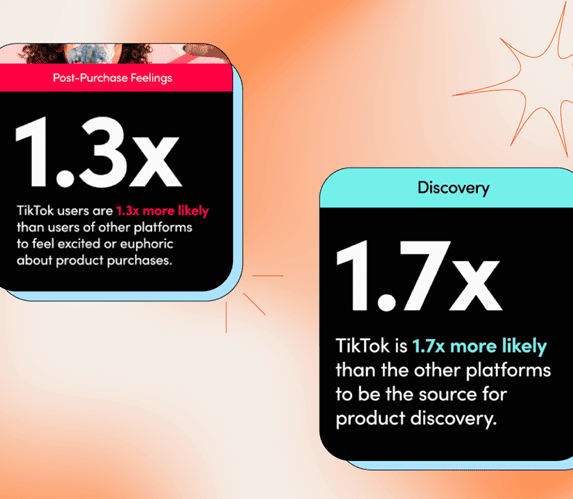
Image sourced from Later
The 5 steps to prospecting customers
So, you have a good idea of the tools used by social prospectors, but how do they fit together as part of a well-rounded strategy? This next section covers a reliable approach that you may want to start with:
Identify your target audience
Before you jump in at the deep end, the first step is to figure out a target audience.
i.e. Who is your ideal customer and what platforms do they primarily use?
You should start by looking at your current customer base. If customers have made an account with your business, then you can use their segmentation data to build a model of your ‘typical customer’.
Primary factors to consider include: age, location, employment, and interests.
From here, you want to find what that ‘typical customer’ does online. What sorts of pages do they engage with? What places do they visit? What keywords do they use? Do they follow any common influencers?
This stage requires significant time and effort to produce accurate results. As such, you will likely make use of the algorithmic segmentation and web scraping tools listed above.
Develop your strategy
Now that you have identified a target audience, you must develop an acquisition plan.
Considering the age and online activity of your prospects, what sort of content would they be most likely to engage with? And what type of strategy will generate the most social media leads?
Video content may be more popular with younger prospects, particularly on sites like Facebook or Twitter. On the other hand, older prospects on sites like LinkedIn may prefer a more professional, text-based Q&A style thread. You could also consider speaking directly to promising prospects, such as using the ‘reply’ function on other peoples’ posts.
Either way, your acquisition strategy should be primarily to provide information for prospects. The best way to build trust is to prove that you are a willing expert. Do this, and you will hopefully have queues of people reaching out to you.
Another consideration is to use influencers as a median. Getting a shoutout from a trusted voice will certainly steer prospects in your direction.
Gather contact details
Your strategy is now in place and your content is racking up thousands of impressions, what next?
At this point, your social prospecting strategy moves from the ‘reach’ phase to the ‘acquisition’ phase. That means you need to incentivize prospects to engage with your post. You can achieve this with a short message or highlighted sentence asking those interested to reach out. Be sure to use visual cues to strengthen your call-to-action here.
As for the gathering process itself? You may choose to ask prospects to direct message your account, which will certainly build on the personal connection. Alternatively, you could direct them to a web form, which will be easier for keeping track of everything.

Image sourced from KO Marketing
Reach out directly to promising candidates
So, we finally arrive at the outreach phase. Now, it is up to you to speak directly with prospects and find your desired qualified leads.
You should open with a simple message here. Certainly, consider using a template to streamline the process. Make sure that it is relevant to their needs, provides value, and is authentic. Normally, asking if they require assistance with the relevant topic is a good way to start the conversation.
Once the connection has been made, you may invite them to make an account on your website. Hopefully, they will share email details with you, thus bringing them further into your sales funnel.
For particularly valuable clients, you should offer to setup video conferencing for a brief Q&A session. Speaking with a representative face-to-face is a sure way to build trust and strengthen the connection.
Complete the sale
The final step is to convert the prospect into a paying customer.
This part of the process is usually left to your sales team. Nevertheless, the stages are all intertwined (at least from the perspective of the customer), and in many cases, the marketing and sales teams are merged as one. As such, we will consider strategies for completing the sale.
The best approach is to invite customers to your mailing lists and then remain patient. Offering discounts on services periodically will act as a short-term incentive.
After a month, if there is no completion of a sale, you may consider reaching out on social media once more. This simply acts as a friendly reminder, so it is important not to be pushy here.
Additional tips for the process
Personalize your approaches
Customers like it when you make them feel valued – it’s your job to prove that. But beyond including their name in the outreach message, what can you do?
First off, it’s important that you come across as ‘human’. That means you need to talk in a conversational tone, not like a robot. Try to remember a small detail about something relevant to their concerns, and go the extra mile where you can. For your customer interactions to be meaningful, you must recognize there is no “one size fits all” approach to customer service.
In terms of software programs that can help you, just look at the recent customer experience analytics market trends. Hyper-personalization tech, like geotargeting, allows you to invite prospects to a shopping experience at a local store.
Of course, you could also take an AI-driven approach to product recommendation. For instance, by pairing products and services to customers based on their browsing history. These programs use extensive machine learning data to predict whether someone will want to buy a product.
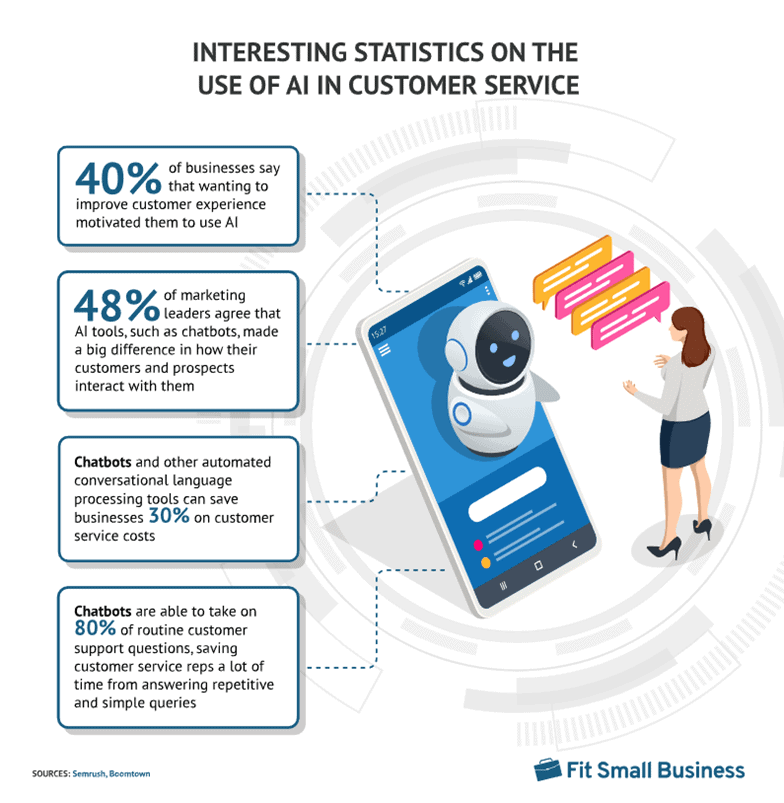
Image sourced from Fit Small Business
Don’t rush the sale
Nobody likes feeling pressure from a salesperson.
After all, why should you be forcing them into making a quick decision? Remember, you’re trying to show you value them. And in the world of marketing, less often means more.
As such, you should keep your deals low-stake and your language low-pressure. It’s best to give them only the information they need to hear, and then remain patient. A minor piece of advice from me is to respond quickly, but not immediately – that may give off the wrong impression.
Test your methodology
Follow this advice, and you’ll be able to form a social media prospecting strategy that works for you and your customers.
To make this process run as efficiently as possible, you need to examine and evaluate your work. That means more data metrics. For starters, you should be measuring KPIs like engagement rate, acquisition rate, and even customer retention. Note how these rates change when you try different approaches, and stick to what works.
Fortunately, the cost of revenue for this marketing type is low, as anyone can post to social media free of charge. Its success will be down to your own effort to listen to customers and stay relevant with the latest social media marketing trends.
Quick Review Prospecting Customers in Social Media
To conclude, social media is an emerging area where businesses can find and speak with prospective customers. Today, more users are joining platforms and communities than ever, making them fruitful places to connect with people.
Tech like social media chatbot plug-ins and AI-personalization tools are readily becoming more accessible, making this marketing method more functional by the day. For this reason, there’s no better time to be getting started with social media prospecting. Following the above steps will set your business on the path to a strategy that works in no time.
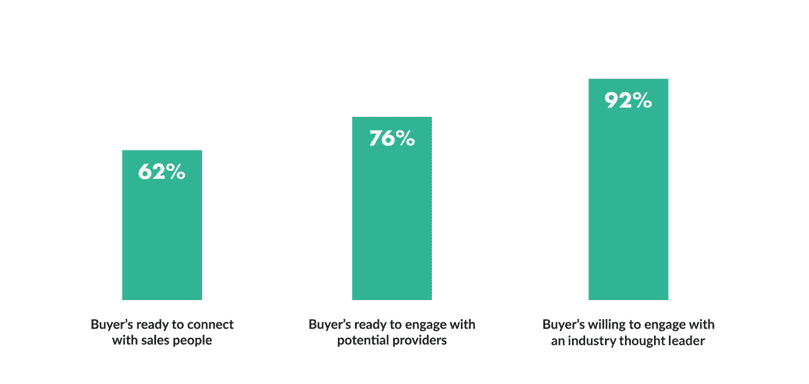
Image sourced from Super Office


